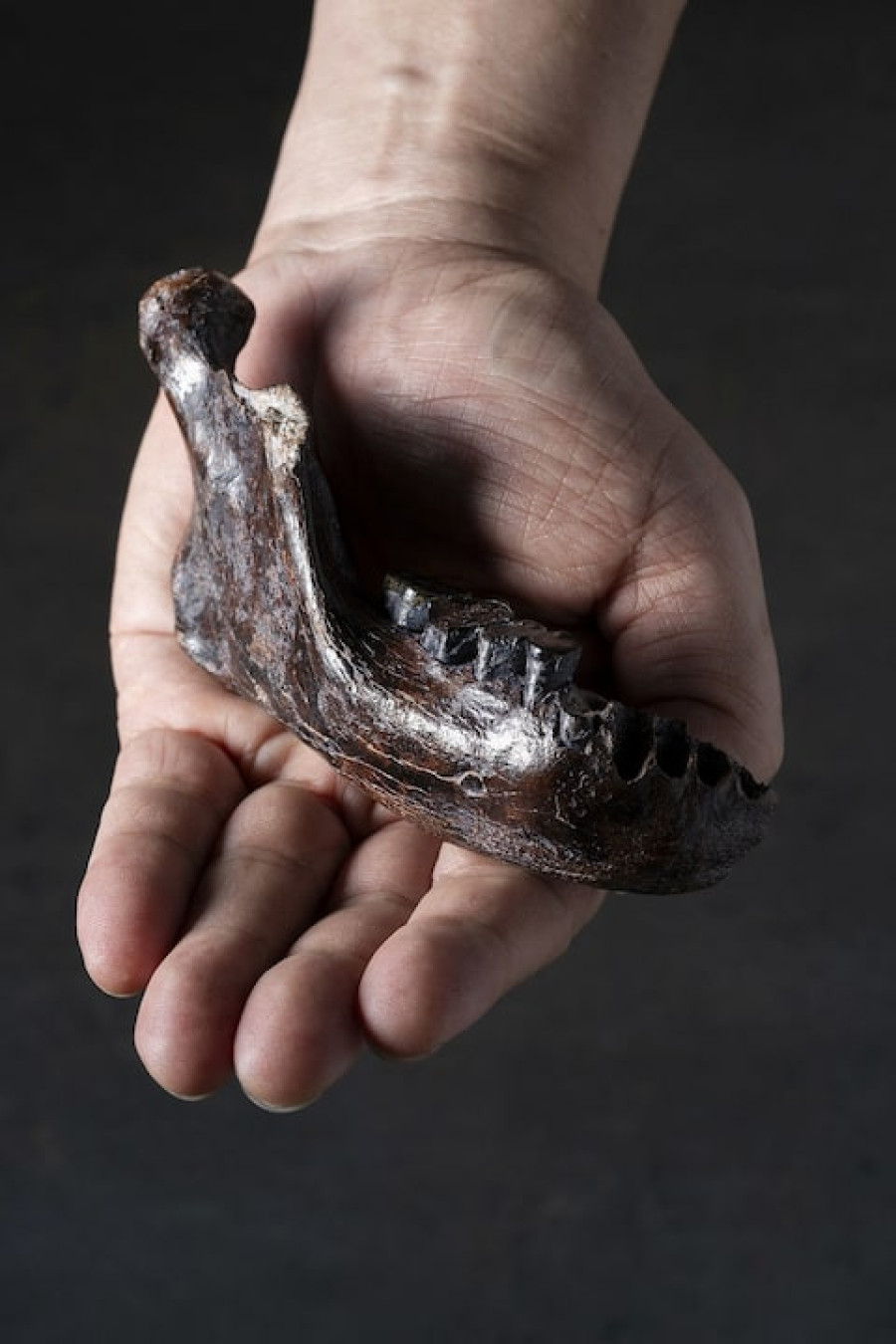Science & Technology
Jawbone from Taiwan shows geographic reach of enigmatic archaic humans
Confirmed Denisovan fossils now have been identified from three places - the Penghu Channel, Denisova Cave in Russia and the Tibetan Plateau in China’s Gansu province
Reuters
Molecular analysis has determined that a jawbone recovered off Taiwan’s coast came from a Denisovan, showing that this enigmatic lineage of archaic humans once inhabited a vast expanse in eastern Eurasia in environments ranging from cold and arid to warm and humid.
Scientists were unable to extract DNA from the fossil - part of the lower jaw, with five teeth attached - but identified two protein variants present in the remains that they knew were specific to Denisovans, rather than either Neanderthals or our species Homo sapiens, based on previously studied fossils.
Protein fragments in the dental enamel of the fossil related to the Y-chromosome, showing that the individual was male.
Determining the age of the fossil has been difficult, as the researchers were unable to use traditional dating methods. They estimate that it is either 10,000 to 70,000 years old or 130,000 to 190,000 years old, based on animal fossils associated with its discovery. That means there is a chance it is the youngest-known fossil of a Denisovan individual.
The mandible, along with various animal fossils, was retrieved from the seafloor through dredging during commercial fishing operations in the Penghu Channel, which once was dry land. It eventually ended up in a Taiwanese antique shop, where it was bought in 2008 and later donated to a museum in Taiwan.
The existence of Denisovans was unknown until researchers in 2010 announced the discovery of their remains in Denisova Cave in Siberia, with genetic evidence showing them to be a sister group to Neanderthals, the stoutly built extinct archaic humans who inhabited parts of Eurasia. Both experienced significant interactions with Homo sapiens, including interbreeding, before vanishing soon after for reasons not fully understood.
From genetics, scientists have determined that Denisovans diverged from Neanderthals around 400,000 years ago. When Denisovans disappeared remains unclear.
Denisovans are known only from scrappy remains of bones and teeth, with nothing close to a complete skeleton discovered to date. That means that any newly identified fossils are important in adding to the knowledge of what they looked like as well as where they lived.
“We can only estimate their jawbone and teeth shapes from the results of this study, but at least the mandible of Denisovan male individuals was very robust and their cheek teeth were large compared with Neanderthals and Homo sapiens,” said biological anthropologist Takumi Tsutaya of the Graduate University for Advanced Studies, SOKENDAI, in Japan, lead author of the study published on Thursday in the journal Science.
Confirmed Denisovan fossils now have been identified from three places - the Penghu Channel remains, teeth and a small finger bone fragment from Denisova Cave in Russia and a mandible and rib fragment from Baishiya Karst Cave on the Tibetan Plateau in China’s Gansu province. A molar from Cobra Cave in Laos is also believed to be from a Denisovan based on its shape.
This shows not only that Denisovans inhabited wide swathes of Eurasia - the distance from Denisova Cave to the Penghu Channel is about 2,800 miles (4,500 km) - but that they did so in very different environments. These ranged from the chilly Siberian mountains to the high elevations of the Tibetan Plateau to the warmth of Laos and the subtropical shoreline of Taiwan.
“Denisovans must therefore have been capable of adapting to a wide range of habitat types,” said molecular anthropologist and study co-author Frido Welker of the University of Copenhagen.
The youngest-known Denisovan fossil determined by scientific dating methods is the rib fragment from Baishiya Karst Cave, at around 40,000 years old. That coincides roughly with the date of the youngest-known Neanderthal remains. Our species trekked out of Africa and entered into regions inhabited by Neanderthals and Denisovans, with both those groups becoming extinct not long afterward.
“We have so little archaeological and fossil information about Denisovans that we can only speculate as to why they disappeared,” Welker said. “A lasting legacy, though, is that some human populations in East and Southeast Asia carry some Denisovan ancestry in their genomes today.”




 5.4°C Kathmandu
5.4°C Kathmandu







%20(1).jpg&w=300&height=200)

